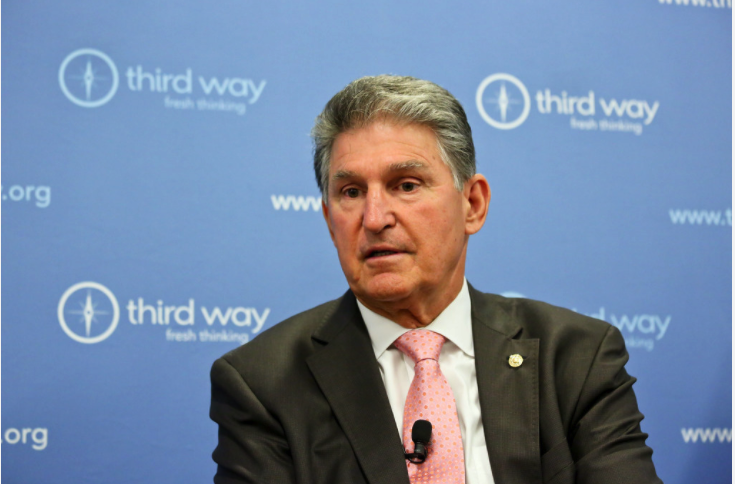The media seems to have a fascination with West Virginia Senator Joe Manchin. Given the countless profile and opinion pieces attempting to provide the definitive take on the idiosyncrasies of the Democrats’ most conservative senator, it’s clear that Manchin sits firmly at the forefront of American political discourse. And this is for good reason: Manchin, along with Arizona Senator Krysten Sinema, holds the balance of power in the 50-50 split Senate, effectively controlling the future of President Joe Biden’s agenda.
I, too, have succumbed to this Manchin obsession, arguing earlier this year that Manchin’s reckless worship of institutions and foolhardy pursuit of bipartisanship has doomed both signature big-D Democratic policies and essential small-d democratic reforms. But while this endless character analysis may be effective at illuminating his motivations, it’s critical to recognize that Manchin is only as consequential as he is because of the quirks of the American electoral system.
The U.S. Senate grants equal representation to states, not people: states with smaller populations therefore have the same number of senators as those with greater populations. These less populous states generally have larger rural populations, while the more populous states generally have larger urban populations. Given this concentration of rural voters in smaller states, the average state is far more rural than the U.S. population as a whole. Whereas around 25% of all U.S. residents — including those in D.C. and Puerto Rico — live in rural areas and 25% live in urban areas, 35% of U.S. residents in the average state live in rural areas and 14% live in urban areas. Of course, control of the Senate is determined not by national popular vote but by which party is able to win the average state and thus 50 seats in the chamber, giving rural voters far greater representation in the Senate than urban voters.
This rural bias translates to partisan skew because Republicans tend to dominate in rural areas while Democrats fare better among urban voters. In the 2020 presidential election, for example, Biden won large metropolitan areas by an average of 14 percentage points, whereas Trump won rural areas by an average of 36 percentage points. It is therefore far easier for Republicans to win the Senate than for Democrats.
This chart compares the 2020 presidential election results with the proportion of state populations that are rural (under 25,000 people in a 5-mile radius), exurban (25,000 to 100,000 people in a 5-mile radius), suburban (100,000 to 250,000 people in a 5-mile radius), and urban core (over 250,000 in a 5-mile radius). As states become more rural, Trump tended to fare better in 2020; and likewise, as states became more urban, Biden tended to fare better. The size of the bubbles is determined by total state population, and notably, many of the states that Trump won handily had small populations. This is where Republicans derive their electoral advantage in the Senate: they are easily able to win Senate seats in predominantly rural, less populated states.
And the Republican geographic advantage in the Senate has been consistent. In 2020, the median state was 5.10 percentage points more Republican than the national popular vote based on presidential election data. Since 1972, the median state has been more Republican than the national electorate in all but one presidential election year, as reflected in the below chart. Electoral bias reflects the difference in the Republican margin of victory in the median state and the Republican margin of victory in the presidential popular vote.
The Senate is thus prone to artificial majorities: Republicans could easily win a majority in the chamber without the support of the majority of the national electorate. And this Republican advantage has serious implications. In an obvious sense, it’s more difficult for Democrats to control the legislative agenda because they are less likely to win majorities, and when they do, they are likely to hold slimmer margins. In turn, shaping the Supreme Court is a greater challenge for Democrats, as a majority in the Senate is required to confirm liberal justices if Republicans obstruct Democrat-appointed nominees.
The Senate’s Republican skew also impacts party strategy. Parties generally must win the support of the ideological median voter to win elections. But when Republicans do not need to win a majority of voters to win elections, they have less of an incentive to reach moderates. This perhaps helps explain why polarization in the U.S. seems to be asymmetric, with Republicans becoming more extreme than Democrats.
Finally, electoral bias greatly affects how Americans perceive politics. For instance, close battles in the Senate over Democratic voting rights bills signal that these policies are highly controversial, when in fact polling suggests that these proposals are broadly popular. And the coverage of Manchin and Sinema often ignores the fact that these senators’ power is simply the byproduct of the Senate’s geography.
The U.S. is not the only country whose electoral system facilitates artificial majorities. Canada and the United Kingdom’s electoral systems also feature significant imbalances; this column will further explore how electoral geography affects the ways in which parties and people think about politics. My aim is not necessarily to argue for the merits of certain electoral or government systems over others. Every electoral system has flaws because democracy is always a balancing act between pure representation and government efficacy; any attempt to consolidate the opinions of 332 million voters into 100 senators will be imperfect. And while I find it particularly hard to defend a government body in which around 580,000 Wyomingites have as much representation as nearly 40 million Californians, my point is not that this is normatively unfair, but that this unfairness has real consequences. At the very least, there needs to be more media coverage that recognizes how electoral geography underpins many of the prevailing narratives about American and global politics.
Note: Rural/Urban state-level data from FiveThirtyEight
Image by Third Way licensed under CC BY-NC-ND 2.0.



